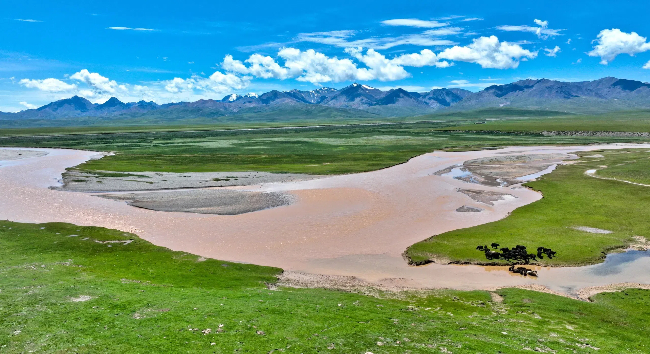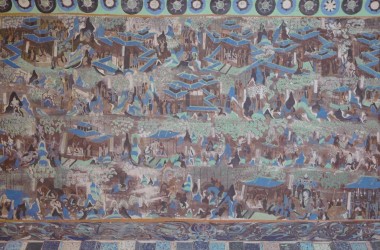Meandering beauty of the upper Heihe River

In the aftermath of rain, an aerial view of the Heihe River's upper reaches reveals a mesmerizing spectacle on the Qinghai-Tibet Plateau. [Photo provided to gogansu.com]
On July 19, 2024, as the skies cleared following a rainstorm, an aerial view of China's second-largest inland river, the Heihe River, revealed a breathtaking scene.
Under blue skies dotted with white clouds, multiple streams of reddish-brown water twisted and turned through the river, rushing downstream like floating yellow dragons.
Emerging from the Qilian Mountains, the Heihe River surges through the central Hexi Corridor in Gansu province. Originating from the northern slopes of the Qilian Mountains in Qinghai, it flows through three provinces - Qinghai, Gansu, and Inner Mongolia.
Its 948-kilometer journey takes it through Sunan, Zhangye, Linze, and Gaotai, before passing through the Zhenyi Gorge of Helishan. It then enters the Badain Jaran Desert in Ejina Banner, Inner Mongolia, before finally flowing into Lake Juyan.
Revered as the "Mother River" of the Hexi Corridor, the Heihe River has nurtured the people along its banks and given rise to rich historical culture. In recent years, significant improvements have been made in water ecology protection, environmental management, soil conservation, and water source preservation in the upper reaches of the Heihe River.
These efforts have led to major changes in the living conditions, production practices, ecological environment, and water usage patterns throughout the river basin. With increasing water flow to the middle and lower reaches year by year, the upper Heihe River now presents an ecological masterpiece.

 Appreciate Dunhuang Online (XXXIX)
Appreciate Dunhuang Online (XXXIX)
 >
>